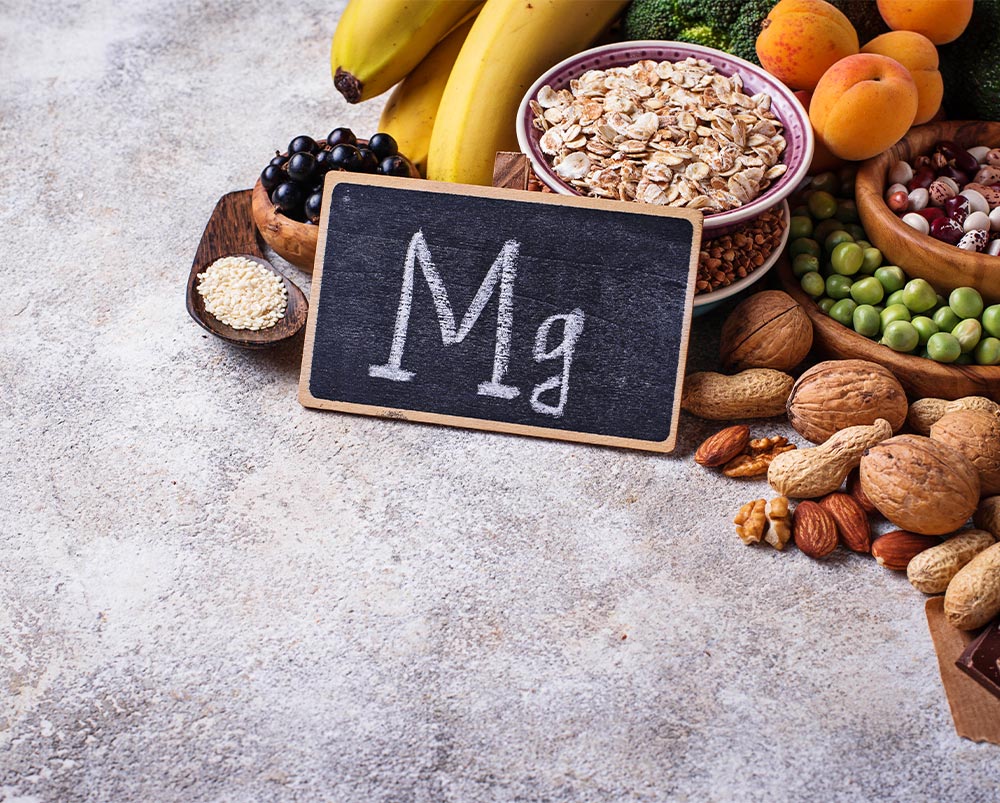As the leaves begin to turn and the days get shorter, some people start to feel a little down. For many, this is just a natural response to the changing of the seasons. However, for others, it could be something more serious: Seasonal Affective Disorder. SAD is a type of depression that's related to changes in seasons – usually starting in autumn and continuing through winter. In this blog post, we'll dive deeper into what SAD actually is, why it's more prevalent in autumn than any other season, who's at risk, and how it can be diagnosed. We'll also explore natural supplements that can help alleviate symptoms of SAD such as NMN, Berberine, and Lion's Mane. So if you're feeling blue this fall season or know someone who is, keep reading to learn more about it and how you can take care of your mental health.
Understanding Seasonal Affective Disorder
The winter months can bring more than just cold weather and festive cheer. For some individuals, it can also bring a type of depression known as seasonal affective disorder, commonly referred to as winter depression. This legitimate mental health condition is characterized by symptoms such as low mood, lack of energy, changes in appetite and sleep patterns, irritability, and even thoughts of suicide. Fortunately, there are treatment options available like light therapy, antidepressant medications, and cognitive behavioral therapy (CBT) that can help individuals cope with SAD and regain their sense of well-being. By understanding the symptoms and available treatments, individuals can take control of their mental health during this time of the year.
What is Seasonal Affective Disorder?
Seasonal Affective Disorder is a form of depression that follows a seasonal pattern. It is characterized by depressive episodes during specific times of the year, resulting in mood changes. Lack of sunlight and changes in serotonin levels are believed to contribute to it. Symptoms of SAD may include fatigue, weight gain, and difficulty concentrating. Treatment options for SAD include light therapy, medication, and therapy. Unlike the winter blues, it affects your daily life, including how you feel and think. Fortunately, treatment can help you get through this challenging time.

Why SAD is more prevalent in autumn?
The prevalence of Seasonal Affective Disorder in autumn can be attributed to various factors. Reduced daylight hours during this season contribute to its onset, affecting mood and disrupting the body's internal clock. As autumn progresses into winter, SAD symptoms may worsen due to the lack of sunlight exposure.
The Causes of Seasonal Affective Disorder in Autumn
Reduced sunlight exposure during autumn, changes in serotonin levels, and disruption of the body's internal clock are key factors contributing to the development of Seasonal Affective Disorder, also known as seasonal depression. The decrease in natural light, specifically the reduced amount of sunlight in winter, affects the production of melatonin, a hormone that regulates sleep. This combination of factors in autumn leads to the onset of SAD. Understanding these causes helps shed light on why individuals may experience winter blues during this time of year. Special lamps, known as light boxes, provide bright light therapy as a treatment option for this condition.
Reduced Sunlight Exposure
As autumn arrives, the reduced daylight hours limit our sun exposure, impacting our mood. Sunlight plays a crucial role in regulating serotonin levels, which are closely tied to our well-being. When it is light, the retina (the light-sensitive layer of cells at the back of your eye) converts the light into an electric impulse that travels to the hypothalamus. The hypothalamus sends a message to several of the body's glands, including the pineal gland which produces less melatonin. When sunlight is lacking, our body's internal clock can be disrupted, leading to sleep disturbances. Additionally, reduced sunlight exposure affects the production of melatonin, which can cause changes in our sleep patterns.Fortunately, light therapy can help alleviate symptoms of Seasonal Affective Disorder by increasing sunlight exposure without the harmful ultraviolet rays. This therapy involves the use of a "light box" that emits light similar to sunlight but without the ultraviolet rays. By providing extra light, it helps make up for the shortage of daylight in winter and may help tell the brain to make less melatonin.

Disruption of Body's Internal Clock
Changes in daylight hours during autumn can throw off the body's internal clock, leading to disruptions in sleep patterns and energy levels. This internal clock, also known as the circadian rhythm, plays a crucial role in regulating various physiological processes, including mood. When the sleep-wake cycle becomes irregular, it can contribute to the development of symptoms associated with seasonal affective disorder. To help regulate the body's internal clock, maintaining a regular sleep schedule is essential. By prioritizing a consistent sleep routine, individuals can mitigate the impact of disrupted circadian rhythms during the autumn months.
Changes in Serotonin Levels
One crucial aspect of managing seasonal affective disorder is understanding the changes in serotonin levels. Serotonin, a neurotransmitter, plays a significant role in regulating mood. During autumn, reduced sunlight exposure can lead to decreased serotonin levels, which are associated with depressive symptoms. To address this, individuals with SAD can benefit from light therapy and the use of selective serotonin reuptake inhibitors (SSRIs) such as citalopram, which help increase serotonin levels. Balancing serotonin levels is essential in managing and treating it effectively.
Who is at risk of Seasonal Affective Disorder?
Certain individuals are more susceptible to Seasonal Affective Disorder. Those with a history of depression, living in regions with shorter daylight hours, or lacking exposure to natural sunlight are at higher risk. Additionally, individuals with a family history of mood disorders may also have an increased vulnerability to SAD.

Risk Factors
Several factors increase the risk of developing Seasonal Affective Disorder, including reduced sunlight exposure during autumn and changes in serotonin and melatonin levels, neurotransmitters that regulate mood and sleep patterns. People with vitamin D deficiency and those experiencing seasonal changes in their circadian rhythm are also more susceptible to SAD. Additionally, individuals with a history of bipolar disorder or major depressive disorder, such as major depression, are more likely to develop SAD. In some people with bipolar disorder, episodes of mania may be linked to a specific season. For example, spring and summer can bring on symptoms of mania or a less intense form of mania (hypomania), anxiety, agitation, and irritability. They may also experience depression during the fall and winter months.
Diagnosing Seasonal Affective Disorder
To diagnose Seasonal Affective Disorder symptoms and their seasonal pattern are carefully evaluated. A comprehensive psychiatric evaluation is conducted to determine if someone has SAD. Mental health professionals may utilize standardized diagnostic criteria in diagnosing this condition. It is crucial to assess the impact of seasonal changes on everyday activities. Additionally, diagnostic tests such as blood tests may be utilized to rule out other possible causes of symptoms. Diagnosing it involves a thorough evaluation of symptoms and their seasonal correlation.
Diagnostic Tests
Diagnostic tests play a crucial role in identifying Seasonal Affective Disorder and distinguishing it from other forms of depression. Blood tests can help rule out medical conditions with similar symptoms, while assessing vitamin D levels provides valuable insights. Evaluating hormone levels such as serotonin and melatonin aids in diagnosis, along with measuring internal clock patterns and circadian rhythm disruptions. Diagnostic tests form an integral part of the comprehensive evaluation process and help healthcare professionals accurately diagnose.
Diagnostic Criteria
To diagnose Seasonal Affective Disorder, it is important to follow the diagnostic criteria outlined by the National Institute of Mental Health. One key criterion is the presence of depressive symptoms during specific seasons. Meeting specific duration and pattern criteria is also necessary for a SAD diagnosis. Assessing the impact of seasonal symptoms on daily functioning is crucial in diagnosing SAD. Additionally, evaluating the absence of non-seasonal depressive episodes plays a vital role in determining if someone has it.

Can Natural Supplements Help with Seasonal Affective Disorder?
Natural supplements can be used as complementary treatments for Seasonal Affective Disorder. NMN has shown potential benefits in addressing SAD symptoms, while berberine is being studied for its effects on alleviating symptoms. Lion's Mane, a medicinal mushroom, may also help alleviate SAD symptoms. These supplements can be used in combination with other treatments for SAD.
Role of NMN in Addressing SAD
Addressing the symptoms of seasonal affective disorder requires understanding its underlying mechanisms. NMN supplementation can potentially help regulate disruptions in circadian rhythm, improve energy levels and mood, boost cognitive function, and reduce inflammation associated with SAD. By enhancing overall well-being, NMN may provide relief to individuals experiencing SAD symptoms. With its potential benefits, NMN offers a promising avenue for addressing the challenges posed by this type of depression during the autumn and winter months.
Berberine and its effects on SAD
Berberine, a natural compound, has been studied for its potential effects on Seasonal Affective Disorder. It may have antidepressant properties, regulating serotonin levels and improving mood in SAD patients. Berberine's anti-inflammatory properties could contribute to alleviating SAD symptoms. Additionally, by reducing oxidative stress, berberine may protect against neuronal damage in SAD. Furthermore, supplementation with berberine might enhance the efficacy of other SAD treatments. Considering these findings, exploring the use of berberine as a potential solution for SAD holds promise.
How Lion's Mane Can Alleviate Symptoms of SAD?
Lion's Mane, a medicinal mushroom, has shown promise in reducing depressive symptoms associated with SAD. It supports cognitive function, protects against neuronal damage, and reduces inflammation. Supplementing with Lion's Mane may improve overall well-being in individuals with SAD.
Conclusion
Reduced sunlight exposure, disruption of the body's internal clock, and changes in serotonin levels are some of the causes of SAD. Certain individuals, such as those with a family history of SAD or those living far from the equator, are at a higher risk. It is important to seek a proper diagnosis through diagnostic tests and criteria. While natural supplements like NMN, berberine, and Lion's Mane may help alleviate symptoms, it is always recommended to consult with a healthcare professional for personalized advice. Remember, you are not alone in your struggle, and there are resources available to help you manage and overcome it.
References:
Seasonal affective disorder, grief reaction, and adjustment disorder
Bright-light exposure combined with physical exercise elevates mood
Seasonal affective disorder: an overview and update
A Controlled Trial of Timed Bright Light and Negative Air Ionization
Association between depressive symptoms and 25-hydroxyvitamin D





Leave a comment (all fields required)